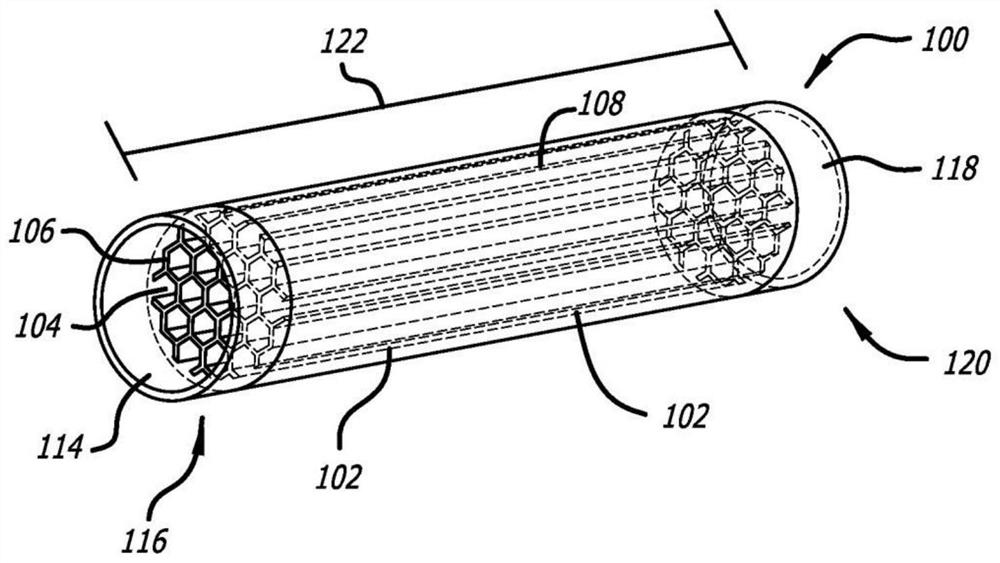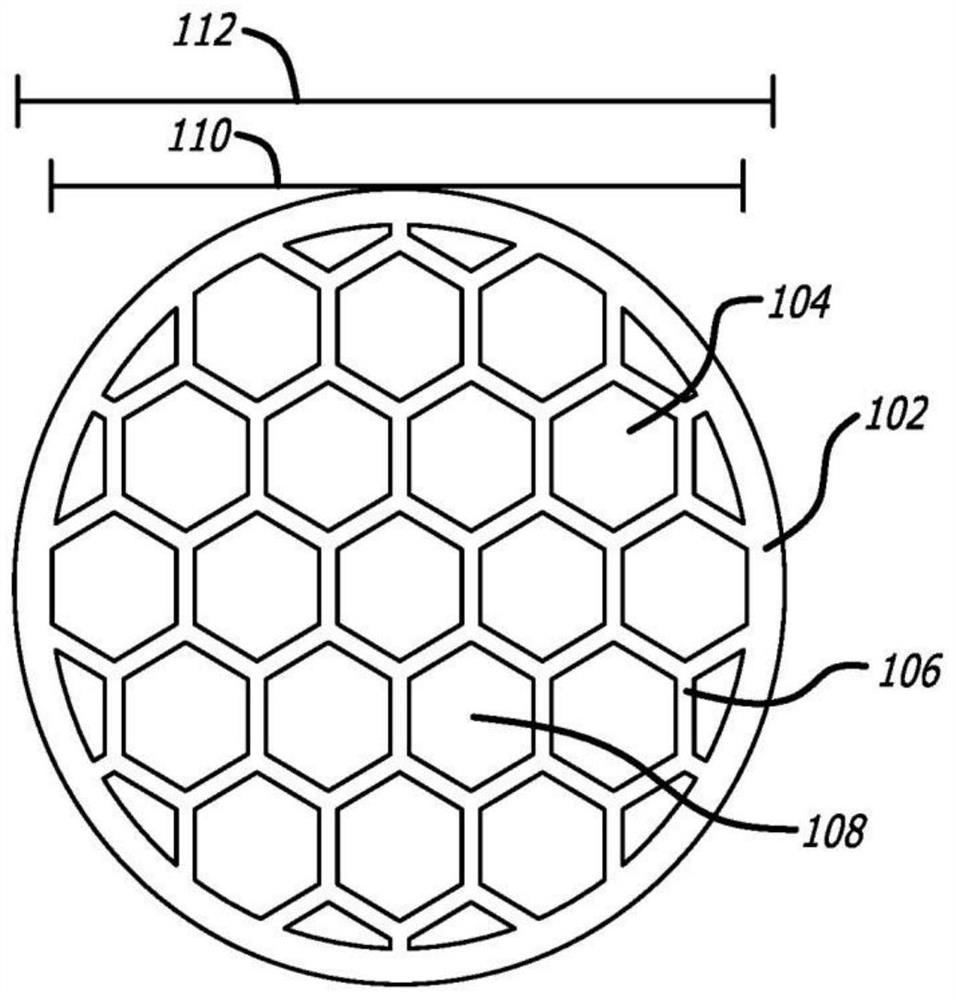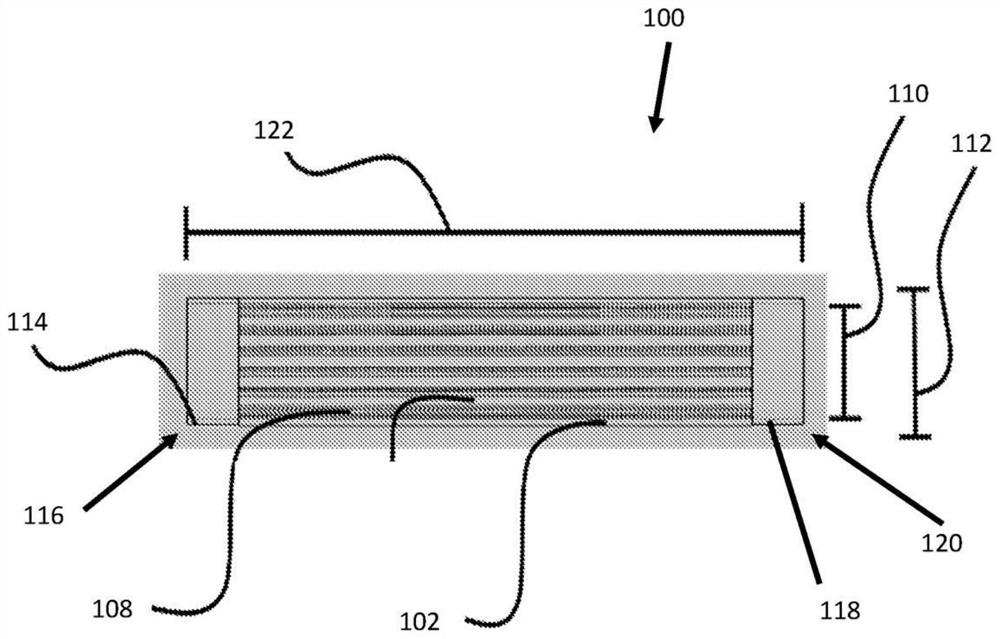Bionic stent for peripheral nerve injury
A nerve repair and nerve tissue technology, applied in the field of bionic scaffolds, can solve the problems of increased surgical time and complexity, high incidence of donor sites, random axon growth direction, etc.
- Summary
- Abstract
- Description
- Claims
- Application Information
AI Technical Summary
Problems solved by technology
Method used
Image
Examples
Embodiment 1
[0068] Example 1. Multi-channel scaffold for nerve injury repair in rat model
[0069] In some embodiments, the device is made of porous PCL and includes linear microchannels. The entire device has an inner diameter of 1.6 mm and a length of 10 mm, with a 1 mm overhang at each end of the outer sheath (eg, for suturing in place within the subject). To assess the efficacy of these devices for nerve repair, the devices were tested in a rat sciatic nerve model. Images of intact sciatic nerves in rats are shown at Figure 12 middle. Animals were housed (eg, 2-3 per cage) with free access to food and water in a facility approved by the American Association for the Accreditation of Laboratory Animal Care. All animal studies were performed according to the NIH Laboratory Animal Care and Safety Guidelines and in accordance with protocols approved by the San Diego VA Healthcare System Institutional Animal Care and Use Committee.
[0070] For device implantation (n=6), animals were d...
Embodiment 2
[0073] Example 2. Multi-channel scaffold for nerve injury repair in rat model
[0074] Multichannel scaffolds prepared by embossing were implanted into 1-cm-long defects of the rat sciatic nerve and compared with autologous sural nerve grafts or open-canalized implants. The scaffold used in this example has 8 microchannels, each with a diameter of approximately 200 microns. The stent is 1cm long and has an outer diameter of 1.7mm. Example images of scaffolds implanted in rats are shown in Figure 13 middle. The multichannel scaffolds 4 weeks after implantation supported linear alignment and accelerated regeneration of axons at the site of injury. Multichannel stents at 6 months post-implantation showed improved connectivity between the spinal cord and gastrocnemius muscle, comparable to autografts, compared to open-cannulation therapy. In addition, the multichannel stent supported increased muscle mass that doubled compared to lesion-only or open-tube therapy and was compa...
Embodiment approach
[0089] The following embodiments describe non-limiting permutations of combinations of features disclosed herein. Other permutations of combinations of features are also contemplated. In particular, each of these numbered embodiments is contemplated to be dependent on or relate to each preceding or subsequent numbered embodiment, regardless of the order in which they are listed.
PUM
| Property | Measurement | Unit |
|---|---|---|
| Length | aaaaa | aaaaa |
| Outer diameter | aaaaa | aaaaa |
| The inside diameter of | aaaaa | aaaaa |
Abstract
Description
Claims
Application Information
 Login to View More
Login to View More - R&D
- Intellectual Property
- Life Sciences
- Materials
- Tech Scout
- Unparalleled Data Quality
- Higher Quality Content
- 60% Fewer Hallucinations
Browse by: Latest US Patents, China's latest patents, Technical Efficacy Thesaurus, Application Domain, Technology Topic, Popular Technical Reports.
© 2025 PatSnap. All rights reserved.Legal|Privacy policy|Modern Slavery Act Transparency Statement|Sitemap|About US| Contact US: help@patsnap.com



